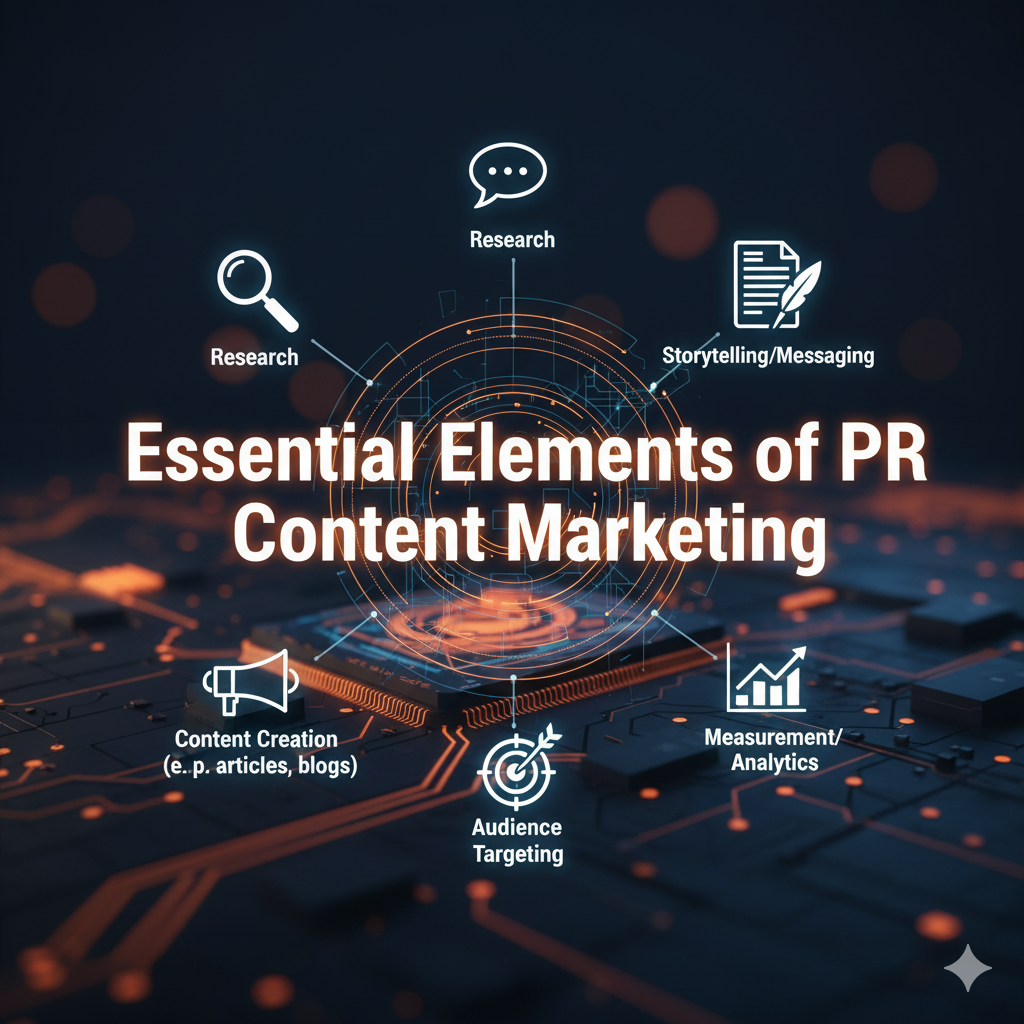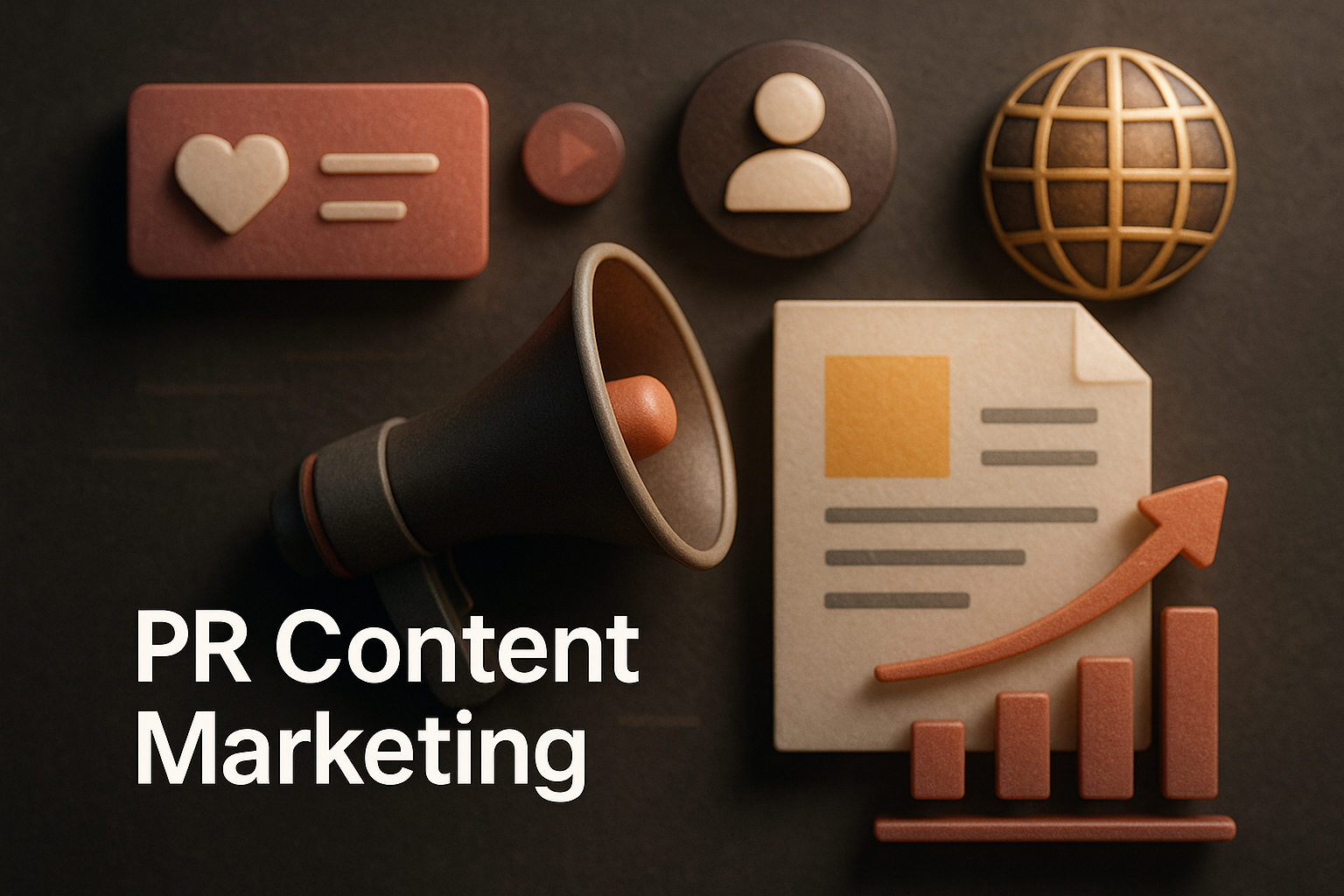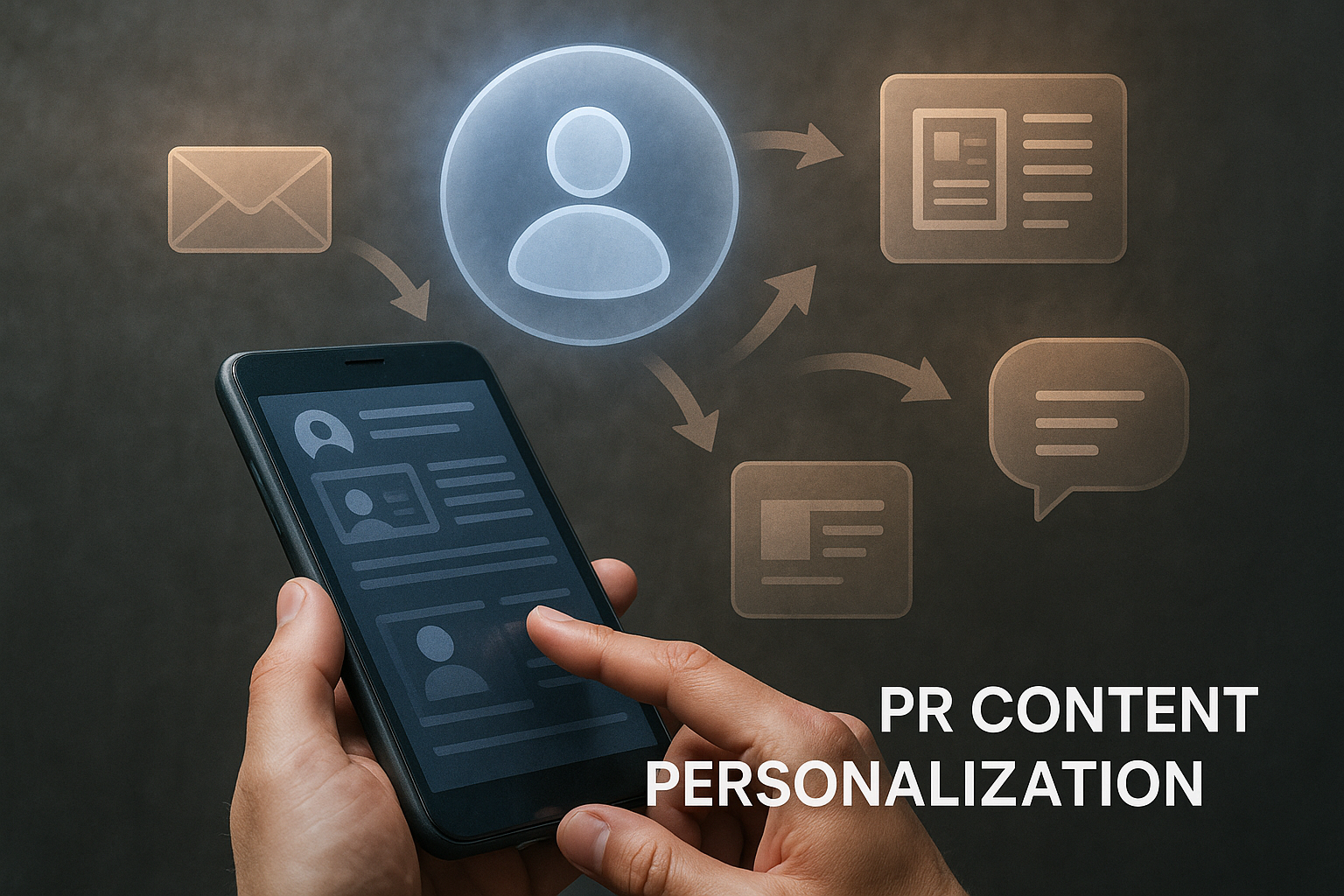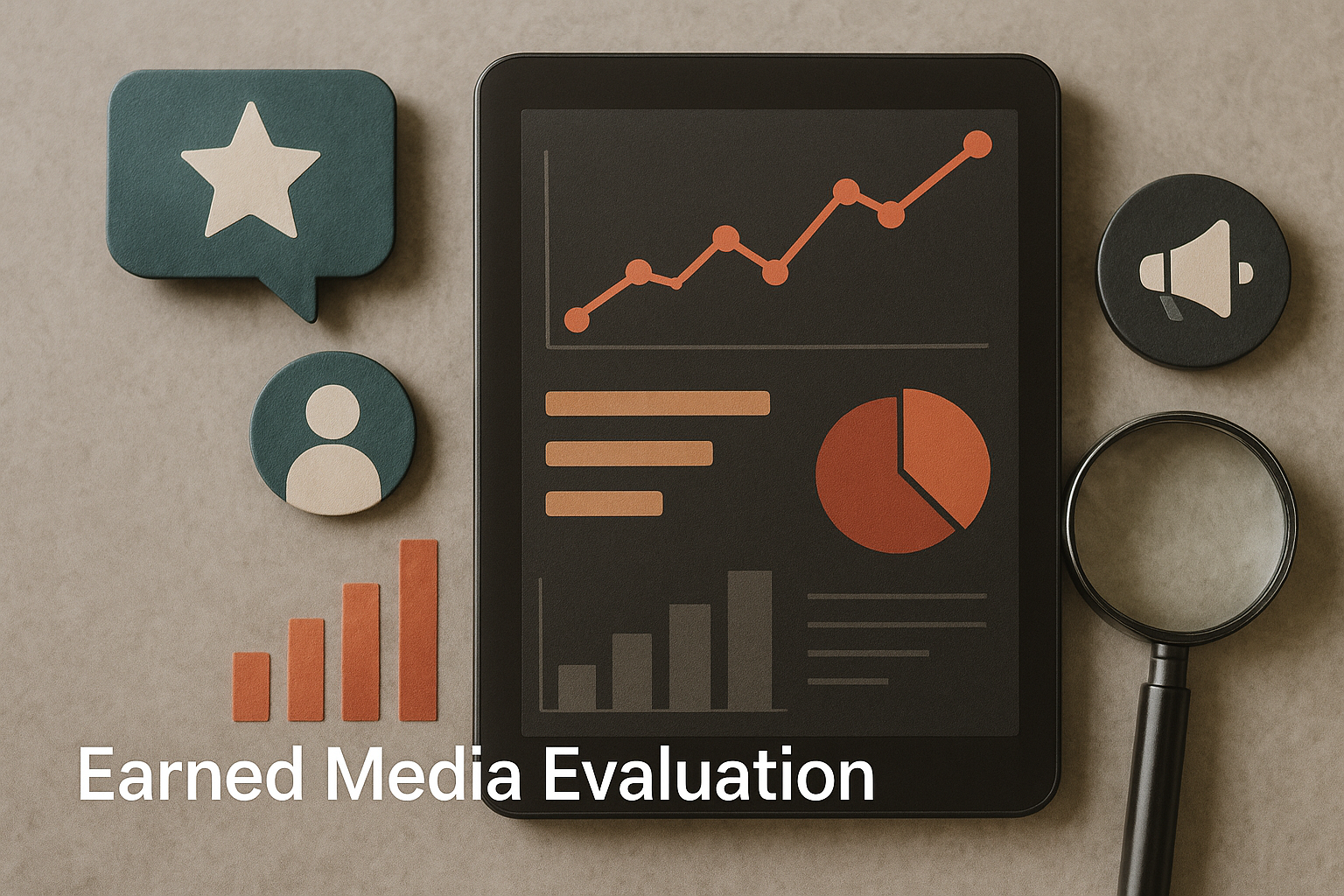PR content marketing is shaping the way brands tell stories, connect with media, and reach people in more authentic and lasting ways.
Not just about getting your name in the news anymore. The way people see brands? It’s different now. And the way stories travel? That’s shifted too. A press release or one mention won’t cut it. Attention comes when the story feels worth reading. Worth watching. Worth sharing. That’s where PR content marketing steps in.
Think of it as the meeting point between public relations and content strategy. PR shapes reputation. Content fuels connection. Put it all together and the voice feels real. Humans. Hard to tune out. And it’s not just a single push anymore. It turns into a back-and-forth between your brand, the media, the people you’re trying to reach.
This is not about shouting louder. It’s about speaking smarter. It’s about telling stories that travel across platforms and spark engagement. From brand storytelling to integrated campaigns, the mix of PR and content opens doors to visibility that lasts longer than a headline. And as the digital world keeps evolving, brands that master this blend are the ones that build trust—and keep it.
What Is PR Content Marketing?

Generated by AI
It sounds like a buzzword at first. But really, it’s simple. PR content marketing is where two streams merge public relations and storytelling. It goes beyond press releases or quick media pitches. Instead, it creates a steady flow of articles, videos, updates, and stories that keep a brand’s voice alive. It isn’t about one big splash. It’s about keeping a rhythm that never stops.
PR has always been about reputation. Content marketing has always been about value. Put them together and you get something powerful: trust that grows over time. A brand isn’t just seen; it’s heard, remembered, and even shared.
The Shift From Old to New
Traditional PR leaned on newspapers, TV, and journalists. The goal was coverage, get your story picked up and hope it spreads. That worked, but it was limited. Today, people don’t wait for the morning paper. They scroll, click, and watch. This change forced PR to evolve. It’s no longer just about where your name appears, but how your story travels across platforms and sticks with audiences.
Why Content Changes the Game
Content changes everything because it keeps the conversation alive. A press mention fades in a day, but a blog post, a smart video, or a real customer story can keep building impact for months. The goal isn’t to outshout the crowd. It’s to create something people actually want to read, watch, and pass along. That’s what keeps your brand relevant, even when the news cycle moves on.
Where the Two Overlap
Think of it this way: PR builds credibility, content builds connection. When they overlap, your brand doesn’t just get noticed it builds relationships. It’s why companies like Impact Authority focus on weaving the two together. Because reputation alone isn’t enough, and content without credibility gets lost in the noise.
A Simple Example
Imagine a new tech startup. Traditional PR would try to land a story in a big publication. Good, but once it’s read, it’s done. Now imagine pairing that with a founder’s story on LinkedIn, a case study on their website, and a short explainer video on YouTube. Suddenly, the story doesn’t just live in one place it spreads, adapts, and sticks. That’s PR content marketing in action.
Why It Matters Now
Audiences are skeptical. They can spot an ad in seconds, and they scroll past anything that feels forced. But when they find a story that feels human, they pause. They engage. They trust. And in a world where attention is the hardest thing to earn, trust is everything.
PR content marketing matters because it blends reach with meaning. It’s not just about being seen, but about being remembered. It’s the long game that turns brand mentions into brand loyalty.
The Power of Brand Storytelling in PR

Generated by AI
Facts can get attention. But stories? They build connections. Numbers may impress, but it’s the narrative behind them that people carry forward. That’s why brand storytelling in PR has become such a force. It turns information into something memorable, something that feels personal even in a crowded digital space.
Why Stories Stick
People don’t naturally remember press releases or product specs. What they remember are moments like the founder who started in a garage, or the customer who solved a problem using your product. Stories move past selling and step into something deeper: meaning. And meaning is what makes a brand feel real.
From Headlines to Heartlines
Traditional PR was all about getting headlines. But headlines fade quickly. Storytelling, on the other hand, lingers. When you share stories that reflect values, struggles, and wins, you’re not just reporting you’re inviting people in. That shift is where PR content marketing shines. It keeps the spotlight on the human side of the brand while still serving the bigger strategy.
Stories Across Platforms
The beauty of stories is how easily they travel. A short video can live on Instagram. A personal essay can live on LinkedIn. A detailed case study can live on your website. Each format reaches a different audience, but the core story stays the same. Consistency across platforms builds trust. Variety in delivery keeps it fresh.
The Emotional Advantage
At its core, brand storytelling in PR is about emotion. People act when they feel something. A compelling origin story, a social impact campaign, or a customer success journey all of these spark feelings. And feelings create loyalty in ways that raw promotion never could.
Why Brands Can’t Skip This
Without storytelling, PR risks becoming just another announcement in a stream of endless content. But with storytelling, brands stand out. They don’t just say what they do; they show who they are. They humanize themselves, making it easier for people to connect and, more importantly, to care.
The Bigger Picture
Storytelling isn’t fluff. It’s a strategy. It builds credibility, fosters trust, and keeps your brand present even when the campaign ends. In today’s fast-scrolling world, storytelling is what slows people down long enough to listen.
That’s the real power. Not louder messages, but deeper ones. Not quick wins, but lasting bonds. When PR leans on storytelling, it transforms from a megaphone into a conversation. And that’s where real influence begins.
Content-Driven Public Relations Strategy

Generated by AI
Old-school PR? It was mostly noise. You sent out a press release, crossed your fingers, and hoped someone picked it up. Sometimes it worked, most times it didn’t. That’s why the shift to a content-driven public relations strategy feels so different. It’s less about chasing headlines and more about owning the story yourself.
Why Content Changes the Game
Truth is, people don’t wait for the news to tell them what matters. They scroll, they click, they listen to podcasts on the train. If you’re not showing up in those spaces with something useful or at least interesting you’re invisible. Content keeps you in the conversation long after the initial buzz fades. A blog post sits on Google. A video gets shared weeks later. A podcast episode can resurface months down the road. That kind of staying power? Traditional PR never had it.
Shifting from Moments to Momentum
Think about the difference. One campaign might land you a flashy headline. Nice, but it’s gone in a day. Now imagine dropping steady pieces of content case studies, founder notes, quick explainers. Each one adds another brick to the wall. Before long, you’ve built authority. People trust you, not because of one splash, but because you keep showing up.
Where PR Content Marketing Fits In
Here’s the thing: PR gives you credibility, content gives you reach. Mix them and suddenly your message doesn’t just land it sticks. That’s why PR content marketing matters so much. It’s not just writing another article; it’s shaping perception, slowly but surely, across every platform where your audience hangs out.
No One-Size-Fits-All
And don’t think there’s one magic formula. What works this month might flop the next. Maybe video gets traction now, but six months later, your audience prefers deep-dive blogs. A content-driven approach isn’t about sticking to a rigid plan, it’s about adapting, testing, and shifting. That flexibility is the real strength.
The Payoff
So, why bother? Because this strategy outlasts the quick wins. You’re not scrambling for attention every quarter. You’re building something that grows with time. A reputation. A voice people recognize. A brand people trust even when the news cycle moves on.
That’s the heart of it. Don’t just chase coverage. Build conversations, presence and the kind of brand that people notice without being told to.
Integrated PR and Digital Marketing

Generated by AI
PR used to live in its own bubble. Marketing lived in another. They rarely spoke the same language. But the walls have come down, and now the smartest brands treat them as one team. That’s the whole idea behind integrated PR and digital marketing blending the credibility of PR with the reach of digital tools.
Why the Mix Matters
On their own, PR and marketing do okay. PR builds reputation. Marketing drives traffic. But when you combine them, the results multiply. Think about it. A PR story lands in a respected publication that’s instant credibility. Now take that same story, push it across social, optimize it for search, repurpose it as a blog, maybe even spin it into a short video ad. Suddenly, one piece of work fuels ten different touchpoints.
Where PR Content Marketing Comes In
This is where PR content marketing quietly ties everything together. You’re not just pitching stories to the media, you’re creating a steady stream of content that fits every channel. PR ensures the message carries authority. Digital marketing makes sure it gets seen by the right people at the right time. Together, they keep your brand present, not just once, but again and again.
The Digital Advantage
Digital platforms give PR something it never really had before: measurable impact. You can track clicks, engagement, conversions. You can see which stories hit and which ones fall flat. And the beauty is, that feedback loop makes every next move smarter. Instead of guessing, you’re adjusting in real time.
Not Just Campaigns, But Ecosystems
The old mindset was “launch a campaign and wait.” That doesn’t work anymore. An integrated PR and digital marketing approach builds ecosystems, not one-off moments. You’ve got earned media working with owned content. Paid ads boosting organic reach. Influencer shoutouts echoing alongside customer reviews. Everything feeds into everything else.
The Human Side
But don’t forget none of this works without a story worth telling. All the tools in the world can’t save a flat message. People connect to people, not press releases. That’s why the best integrated strategies start with narrative. They build content around values, experiences, and emotions. Then the tech amplifies it.
Why It Works
It works because audiences don’t separate PR from marketing. They don’t think, “Oh, this is a PR piece” or “That’s a marketing ad.” They just see your brand. If it feels real, they trust it. If it’s useful, they share it. Moreover, if it’s consistent, they remember it. That’s the payoff of integration.
Essential Elements of PR Content Marketing

Generated by AI
Good PR doesn’t just happen. Neither does good content. Put the two together, and you need a clear framework to make it work. PR content marketing isn’t about throwing posts into the void and hoping something sticks. It’s about building with intention piece by piece, until it holds together like a strong story.
Know Your Audience First
Everything starts here. Who are you talking to? What do they actually care about? If you’re speaking to journalists, your content needs to inform. If you’re reaching customers, it should feel relatable. Get this wrong, and even the best story won’t land. Get it right, and suddenly people lean in.
Craft the Message
Once you know the “who,” you shape the “what.” A clear message is the backbone of every campaign. It’s not about jargon or flashy words. It’s about clarity. What do you stand for? What’s the value? Why should anyone pay attention? A strong message keeps your PR steady when everything else feels noisy.
Use the Right Mix of Formats
Some stories need depth: a case study, a whitepaper, a long-form article. Others need speed: a tweet, a short video, a visual post. There’s no single format that works for all audiences. That’s why the smartest strategies layer formats. Blogs, podcasts, videos, infographics all play different roles but push the same message forward.
Data and Insights Matter
Stories are powerful, but proof is what keeps them credible. Backing your message with stats, surveys, or research gives it weight. Reporters love it. Readers trust it. And in a time where everyone is skeptical, data becomes that extra layer of confidence.
Don’t Forget Distribution
You could create the most compelling content in the world, but if no one sees it, it doesn’t matter. Distribution is half the battle. Owned channels like your website or newsletter, earned channels like media coverage, and paid promotions all work together. The more places your story lives, the harder it is to ignore.
Stay Consistent
One press release won’t change perception. One blog post won’t build authority. Consistency does. It’s about showing up again and again with a clear voice. Over time, that builds trust. And trust is the real currency in PR.
Keep It Flexible
But here’s the catch: you can’t get rigid. Audiences shift. Platforms change. What clicked last year might fall flat today. The strongest brands watch trends, try fresh ideas, and shift when needed. Staying flexible keeps the strategy alive while still holding onto the core message.
The Big Picture
When you put these elements together audience, message, formats, data, distribution, consistency, and flexibility you get more than content. You get a connection. That’s the heart of PR content marketing. It’s not about making more noise. It’s about telling smarter stories that feel real, build trust, and last well beyond the first click.
The Role of Thought Leadership

Generated by AI
Every brand wants attention. But attention on its own doesn’t last. What lasts is trust. And that’s where thought leadership comes in. It’s not a buzzword. It’s the difference between being a name people scroll past and being the voice they stop to hear.
Why Thought Leadership Matters
Think about it. People are bombarded with updates, launches, and statements every day. Most of it disappears within hours. What cuts through is expertise. When someone consistently shares fresh ideas or brings clarity to messy topics, they stand out. That’s what turns a company into a guide, not just a seller. Over time, that consistency builds credibility, something no one can fake.
How It Works with PR Content Marketing
Now, connect this idea back to PR content marketing. They fit together almost naturally. A good content-driven campaign needs more than flashy design or catchy headlines. It needs weight. Thought leadership provides that weight. A blog post that unpacks industry trends, a LinkedIn article that challenges old thinking, or a panel discussion that sparks debate all of these become PR stories worth telling. They don’t just promote a brand; they shape the conversation around it.
Authority Built One Piece at a Time
The truth is, thought leadership doesn’t happen overnight. It’s built the same way trust in real life is built slowly, with repeated action. A founder speaking at an industry event, a CEO writing about lessons from a failed project, a brand leader answering tough questions in interviews each act leaves a mark. Piece by piece, authority grows. And when the time comes for a big launch or even a crisis, that authority becomes a safety net.
Keeping It Human
Here’s the part most brands forget: leadership doesn’t mean perfection. People actually tune out when everything feels staged. The leaders who resonate are the ones who show the human side. Sharing lessons learned the hard way. Admitting when things didn’t go as planned. Balancing authority with humility. That blend of insight and honesty is what makes thought leadership stick and what makes audiences feel like they’re not just being marketed to.
From Ideas to Influence
And then comes the payoff. Thought leadership transforms ideas into influence. Suddenly, journalists aren’t just covering your story, they’re calling you for quotes. Partners want to collaborate. Customers feel reassured they’re in good hands. The reach extends far beyond one campaign or one press release. It becomes a cycle: strong ideas fuel content, that content drives visibility, and visibility strengthens the brand’s reputation even more.
That’s the real role of thought leadership. It’s not about louder messaging. It’s about meaningful messaging that lasts.
Measuring Success in PR Content Marketing

Generated by AI
Here’s the thing about PR content marketing: it sounds great on paper, but if you can’t measure the results, you’re pretty much guessing. And no brand wants to pour time, energy, and budget into guesswork. The real question is how do you know if it’s working?
Beyond Vanity Metrics
Sure, likes and shares look nice. They give you that quick dopamine hit. But they don’t always tell the full story. What you really want to see is impact. Are people sticking around to read your content? Are journalists picking up your stories? and Are decision-makers starting to pay attention to your brand? Those are signs that go deeper than a heart emoji on Instagram.
Tracking Reach and Engagement
Start simple. Reach and engagement still count; they show how wide your story spreads and how people respond. But numbers alone aren’t enough. Pay attention to the depth. Comments, questions, and shares reveal if your message is starting real conversations. Even better, if you see your ideas quoted elsewhere, you know you’re making waves outside your own channels.
Website Traffic and Conversions
Now, here’s where it gets interesting. PR content marketing should push people toward your website. If traffic spikes after a campaign, that’s a solid sign. But go one layer deeper. Check how long visitors stay, what pages they explore, and whether they take action. Did they sign up for a newsletter? Download a report? Book a call? Those conversions connect PR to actual business growth, and that’s where the real value lies.
Media Coverage and Mentions
One of the oldest measures of PR is media coverage, and it still holds weight today. But it’s not just about counting articles anymore. It’s about the quality of those placements. Getting featured in a respected industry outlet can shift perception more than a dozen random mentions. And don’t ignore podcasts, niche blogs, or influencer shoutouts they all count in building authority.
Sentiment and Brand Perception
Numbers alone don’t tell the whole story. Sentiment does. Pay attention to the tone of the coverage and conversations. Are people framing your brand positively? Are you seen as innovative, trustworthy, or reliable? Tools can help track sentiment, but sometimes a manual look through comments or coverage reveals more nuance.
Setting Clear KPIs
None of it really clicks without clear goals. Before rolling out a campaign, you need to define what success actually means. For some, it’s building brand awareness. For others, it’s shaping thought leadership. And sometimes, it’s about driving leads. Setting those KPIs from the start keeps you from chasing shallow wins and makes sure you stay focused on results that truly matter.
Long-Term Impact
The funny thing about PR is that it often works like compounding interest. One campaign won’t change everything right away. But with time, the trust you earn, the audience you grow, and the reputation you shape turn into real value. So don’t just track quick jumps, watch the bigger picture over the long run.
That’s the real way to measure success in PR content marketing: don’t just count the noise, measure the meaning behind it.
Common Mistakes to Avoid

Generated by AI
Every strategy looks perfect on the whiteboard. But when it hits the real world? That’s where cracks start to show. PR content marketing isn’t immune. In fact, some brands keep tripping over the same mistakes, again and again. The good news? Spot them early, and you can sidestep the mess.
Talking to Everyone (and Reaching No One)
It’s tempting to write in a way that pleases everyone. Safe, broad, polished. But when you try to reach everyone, you often connect with no one. Messages get watered down. The story loses edge. And the people who matter most the ones you actually want to influence scroll right past. Better to speak directly to a smaller group and hit them hard, than whisper to the crowd.
Forgetting the Bigger Story
Press releases and blog posts pile up. But where’s the thread? Where’s the story that ties it all together? Too often, brands push out content without thinking about the bigger narrative. PR isn’t just about filling space, it’s about shaping perception. Without a clear story, the content becomes noise.
Chasing Short-Term Wins
Here’s a classic trap. A spike in clicks. A viral post. A flashy mention. Feels good, right? But the buzz fades fast. The mistake is chasing moments instead of building momentum. Real PR content marketing pays off over time. It’s not about the one viral post. It’s about consistency.
Ignoring Data
Some brands still run campaigns on gut feeling. And while instincts matter, data tells you what’s actually working. Ignoring analytics means you miss patterns, blind spots, or chances to improve. Even small insights like which headlines keep people reading can reshape your entire approach.
Copy-Pasting Across Channels
Another misstep? Treating every platform the same. A press release on LinkedIn might work. Drop that same text on Instagram, and it falls flat. Each channel has its own tone, pace, and audience. Recycling content without tailoring it makes the brand look lazy, even out of touch.
Overhyping Everything
This one’s easy to spot. Every update is “groundbreaking.” Every product launch is “revolutionary.” Big promises get old fast. People can smell it when the words don’t match what’s real. And once that happens, trust slips. Sometimes quick. Sometimes all at once. The plain truth? Simple, straight talk sticks. Flashy lines don’t.
Forgetting the Human Side
PR, at its heart, is about people. Yet some brands talk like machines. No warmth. No personality. Just corporate-speak. That’s a fast way to lose attention. Audiences want stories they can connect with, not jargon-filled statements that sound like they were spit out of a template.
Avoiding these mistakes won’t guarantee instant success. But it does clear the path. And it leaves room for your message to land where it should be direct, clear, and human.
Building Strong Media Relationships in the Digital Age

Generated by AI
PR has always relied on relationships. Decades ago, it meant knowing editors by name, sending press kits by mail, and working the phones. Today? The stage looks different. Journalists aren’t parked at a desk all day, waiting for your email.
They’re juggling Twitter feeds, recording podcasts, pushing out newsletters, and racing deadlines that never really stop. The job didn’t vanish. The rules just shifted.
From Transactions to Trust
One of the biggest mistakes brands make is treating media outreach like a transaction. Fire off a press release. Hope for coverage. Move on. But in reality, trust drives everything. Reporters and creators are flooded daily with pitches that sound almost identical.
What makes them stop and listen? A relationship. When they know you only reach out with something meaningful, you move from spam folder to inbox priority.
Meeting Media Where They Are
The digital age gives endless entry points, but it also raises the bar. You can’t just rely on old-school press releases. Journalists now hang out on LinkedIn, engage in Twitter threads, or share thoughts on Substack. Reaching out means understanding where they spend time and speaking their language. It’s not about blasting the same pitch everywhere, it’s about tailoring it for the space.
Adding Value, Not Just Stories
Here’s the catch: if every time you reach out it’s only about you, people tune out. Media relationships grow when you bring value. Maybe it’s sharing a new data set. Maybe it’s offering quick expert commentary on breaking news. Or maybe it’s connecting them with someone in your network who fits their story. When you make their job easier, they remember you for the right reasons.
Blending PR and Content Marketing
This is where PR content marketing earns its place. A good piece of branded content, say, a research report or a thought leadership article can be just as useful to a journalist as it is to your audience. It gives them a hook, something to reference, something credible. Instead of begging for coverage, you’re handing them material that makes their story stronger.
Consistency Over One-Offs
Like any relationship, media trust doesn’t grow overnight. It builds with steady effort. Checking in even when you don’t need something. Sharing relevant updates without expecting instant coverage. Being respectful of deadlines. These small things add up. Over time, you’re not just a name in their inbox, you’re a reliable source.
Navigating the Noise
The digital age is loud. Everyone’s out there pitching, posting, pushing something. The answer isn’t yelling louder, it’s playing smarter. A pitch that proves you know a journalist’s work? That always lands better than some copy-paste blast. And the funny part? Hardly anyone bothers. So even a small effort puts you miles ahead.
Good media ties still hold PR together. Platforms shift. Tools change. But one thing doesn’t: people trust people. The brands that see journalists and creators as partners not just targets are the ones that keep winning.
Future Trends in PR Content Marketing

Generated by AI
Truth is, PR content marketing isn’t standing still. The tools are shifting, the platforms keep multiplying, and the way people consume stories? It’s changing faster than most of us can keep up with. What worked last year might already feel stale today. And tomorrow? Probably something completely different. That’s the challenge and the fun of looking ahead.
Personalization Gets Real
Let’s be honest no one wants to read content that feels copy-pasted. The future is personalization, but not in a creepy, “we know everything about you” kind of way. It’s about using data to make stories feel relevant. Not generic press blasts. More like, “hey, this was written with you in mind.” That shift is going to separate brands that connect from the ones that just…shout.
Video Everywhere
Open any feed and what do you see? Video. Short clips, live sessions, raw behind-the-scenes reels. It’s not an add-on anymore, it’s center stage. And here’s the kicker: people don’t even want polished, high-budget stuff all the time. They want real. A shaky phone video of a founder explaining an idea can land harder than a slick commercial. Because emotion sticks. Words on a page are good, but moving pictures and sound are different.
AI Won’t Steal the Show
Everyone’s asking: will AI take over PR? The short answer is no. It’s already a useful tool. Research, quick drafts, spotting trends, sure. But storytelling? That’s still human territory. People connect with quirks, flaws, and personality. AI can help polish, but it can’t feel. And PR lives in that emotional space. Think of AI as the sidekick, not the hero.
Influencers, But Smarter
Influencers aren’t some fresh idea. What’s changing is how brands lean on them. It’s moving away from quick shoutouts and into real partnerships. The kind where the person actually backs the brand, not just cashing the check. People can spot fake hype instantly. What sticks are real voices and real stories. That’s what breaks through.
Speed Matters More Than Ever
The news cycle moves in minutes now. A story breaks in the morning, it’s trending by lunch, and forgotten by dinner. That means PR teams can’t wait around drafting the “perfect” response. Quick, honest engagement will beat late, polished messaging every time. The brands that win? They’ll be the ones ready to jump in while the conversation is still hot.
Purpose on Display
This one’s big. People don’t just care about what you sell. They care about what you stand for. Sustainability, fair treatment, social impact, it all matters. And here’s the catch: if you fake it, people will find out. Future campaigns will need to show purpose in ways that feel real, not staged. Authenticity isn’t just a buzzword anymore it’s survival.
Global, but Local Too
Brands are going global, sure. But one story doesn’t land everywhere the same way. What makes sense in London might flop in Tokyo. The future lies in finding that balance: one big story at the core, adapted with local flavor. It’s tricky, but when done right, it makes a brand feel both global and personal at the same time.
The funny thing about predicting the future is you’re never fully right. But one thing’s clear: PR content marketing won’t slow down. It’ll keep mixing technology, creativity, and human instinct. And the brands that dare to experiment? They’ll be the ones writing the next chapter.
Conclusion
At the end of the day, PR content marketing isn’t about ticking boxes. It’s about telling stories people actually care to hear. The tools will keep changing, the platforms will rise and fall, but the heart of it stays the same—connection.
When brands get that right, everything else falls into place. The messages feel real. The audience listens longer. And the trust that grows from it doesn’t vanish overnight. That’s the difference between noise and impact.
So maybe the trick isn’t working harder. Maybe it’s working smarter. Listening closer. Writing with a little more honesty. Putting people first instead of pushing another polished headline into the void.
Because in the end, good PR isn’t magic. It’s not luck. It’s craft. And when done well, it lasts.




